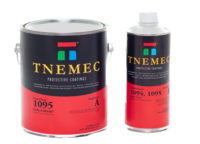The snow has melted, the ground has thawed, and it’s been a while since we have had to check the temperature and the wind-chill factor before we head outside. But it will be a long time before people in the Northeast forget the record-setting winter of 2015. Bangor, Maine shivered through its coldest February on record, with an average temperature of 6 degrees Fahrenheit. Syracuse also set a record average low of 9 degrees F., Cleveland 14 degrees F. Boston enjoyed a relatively mild average in February of 19 degrees F., but had to deal, of course, with record-setting snow.
For those who work in the construction industry, this past winter provided a harsh reminder that the United States is made up of widely different climates. It also underscored the fact that codes and regulations need to be sensitive to varying climate conditions if they are to be both practical and effective.
Case in point: seven years ago, the Ozone Transport Commission, or OTC, issued regulations designed to achieve federally mandated air quality standards in the Northeast and Mid-Atlantic states. The regulations, which lowered the amount of volatile organic compounds, or VOCs, in many roofing products, were based on those used in southern California, and incorporated provisions that were effective in the climactic and market conditions of that state.
To comply with the new regulations in California, many manufacturers developed water-based materials, which could be used year-round in that state’s moderate climate. But states in the effected OTC areas, from Virginia to Maine, confronted a situation where the new regulations threatened to bring the roofing industry to a sudden halt.
In some instances, no sealants were available to meet the new standards. And the new sealants, when they became available, would need to be effective in very cold climates totally unlike those on the west coast. Most of the new products used in California were ineffective when the temperature dropped below 40 degrees F., and would severely limit the roofing season in the Northeast.
Officials in the impacted states set about to meet the new clean air requirements, without negatively impacting small and large businesses in their area. They scrambled to create “phase in” schedules that would give industry enough time to develop products to meet the new standards.
Some also had to deal with the fact that many roofers worked across state borders, since the impacted area included some of the smallest states in the country. Would a user or seller of these products working in adjacent states have to deal with two sets of regulations?
Regulators in Maine, for instance, after their initial implementation of the new standards, received calls that differing requirements in Maine and next-door New Hampshire had created confusion in the marketplace. To accommodate regional needs, and create an approach more consistent with that of New Hampshire, Maine has delayed full implementation of the requirements until January, 2016.
No one would deny that the new VOC regulations have presented a challenge to both the construction industry and to state regulators. However, like a lot of situations that require a new approach, the implementation of VOC regulations has created some unanticipated benefits.
First, members of the roofing industry stepped up and provided input to the regulatory process, based on their experiences in the field, as well as on scientific studies. Regulators from Virginia to Maine listened closely, and expressed appreciation for this input.
An analyst with the Virginia Department of Environment Quality, who helped formulate the VOC regulations, pointed out that his state seeks input from all interested parties, including the general public and the people who produce the products. Likewise, a member of the Maine EPA staff who is responsible for rulemaking, summed up the need for feedback from the roofing community, stating, “We really wanted to make this work.”
Ellen Thorp, associate executive director of the EPDM Roofing Association, or ERA, monitored the roll-in of the implementation of VOC regulations over a period of five years and provided input to state regulators based on ERA’s ongoing research. “Every single conversation that I have had with regulatory officials has been met with eagerness to receive scientific, unbiased information. They want science and they are very enthusiastic, and came to see us as partners, not adversaries, in the process.”
Thorp noteed that it’s important to provide regulators with an overview of the most relevant research, rather than initially barraging them with an overload of details. And, she pointed out, it’s important to make members of the roofing industry who conduct research available for one-on-one conversations with the regulatory decision-makers. “They need—and want—access to the researchers and the R&D people.”
Thorp said that ERA has applied some of the lessons learned from the VOC process to their input at ASHRAE meetings and ICC hearings. “What we learned is that people making decisions are thirsty for good scientific information. We implemented that strategy to combat some of the greenwashing that is present in the consumer press.” Thorp added that rhetoric and hyperbole with no scientific foundation does not work. “We rejected any shallow means of persuasion and concerned ourselves with the best scientific data to provide to the decision-makers.”
Second, members of the roofing industry stepped forward to track changes in the regulations. For instance, ERA leadership kept in close contact with regulators in all of the OTC states, as situations changed and deadlines evolved. ERA devoted extensive time and resources towards making its Web site a one-stop source of information on the new VOC standards. Thorp points out that its Web site tracking shows that the section on VOC regulations remains one of the most visited on the site and she received numerous calls about the new standards. “We are continuing to inform the industry about updated regulations, as needed, on our Web site, as well as through our Twitter, Facebook, and LinkedIn accounts.”
Third, roofing manufacturers tapped into their resources to create innovative new products that will meet and exceed the VOC standards. John Geary, director of education and industry relations at Firestone Building Products, points out that roofers now have a choice of solvent-free (and odor-free) adhesives, self-adhered membranes, and bonding adhesives that are effective in lower temperatures.
“This response to a challenge is driving innovative roofing products in the 21st Century. We’re providing our customers with an array of new products that meet these new VOC requirements and allow for installation in colder climates without unpleasant odors,” says Mike Ducharme, director of Product Marketing at Carlisle Construction Materials, noted the drive to provide more user friendly VOC compliant adhesives led to the development of flexible foam adhesives with improved cold weather performance. In this case, regulation and rule-making were structured to be in sync with the innovation and technology driven by the manufacturers.
“As an industry,” says Thorp. “We’re committed to staying ahead of the curve. And we’re just as committed to informing regulators and code-setting bodies about the realities of our business so that we can meet the needs of the construction community.”





